I have to write a program in Java that uses StdAudio and Picture to create a two-dimensional color visualization of a sound file while it is playing but I'm not really sure how to.
Can someone tell me everything that I need or tell me what I need to do to "convert" the sound file so that it's readable by Picture?
I could grab the samples from the sound file and return them as array of doubles, but then how would that even create an image? How could those values even sync with the image?
I have been playing around in eclipse just trying to figure out how this could possibly even work but my code just ends up being a whole mess.
private final static int SAMPLE_RATE = 44100;
private static int WIDTH = 500;
private static int HEIGHT = 100;
private static JFrame frame;
private static Picture pic;
public static void main(String[] args) throws IOException
{
pic = new Picture(WIDTH, HEIGHT); // <- blank black image
String audioFile = "SampleTest2.wav";
double[] audio = StdAudio.read(audioFile);
frame = new JFrame();
frame.setContentPane(pic.getJLabel());
frame.setDefaultCloseOperation(JFrame.DISPOSE_ON_CLOSE);
frame.setTitle("Sound Visualization");
frame.setResizable(false);
frame.pack();
frame.setVisible(true);
for (int k = 0; k < audio.length; k++)
StdAudio.play(audio[k]);
for (int i = 0; i < pic.width(); i ++)
{
for (int j = 0; j < pic.height(); j++)
{
pic.set(i, j, toColor(audio[SAMPLE_RATE + i]));
//frame.setContentPane(pic.getJLabel());
}
frame.repaint();
}
}
private static Color toColor(double colVal)
{
int r = (int) (((colVal + 1) / 2) * 255);
int g = (int) (((colVal + 1) / 2) * 255);
int b = (int) (((colVal + 1) / 2) * 255);
return new Color(r, g, b);
}
